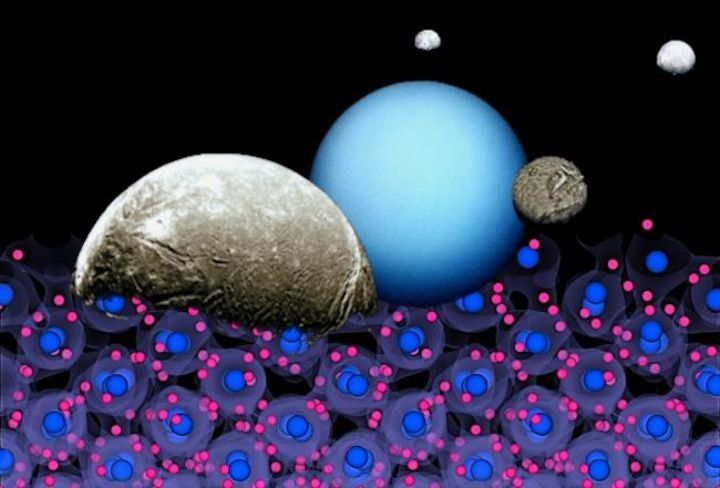15.08.2020

Researchers are investigating an alien version of water inside the strange, icy interiors of Uranus and Neptune.
In a new study, scientists have devised a theoretical computer model and used it to peer inside the ice giants Uranus and Neptune. With this tool, the team studied the thermal and electrical conductivity of the unusual water inside of these planets. In simulating these physical processes on the teeny-tiny atomic scale, the researchers hope that this new model will reveal information about the icy bodies' internal structure, magnetic fields, how they evolved and exactly how old they are.
In studying Uranus and Neptune with this model, the researchers, who stem from the International School for Advanced Studies (SISSA) in Trieste, Italy and the University of California at Los Angeles, estimated that the two planets are likely primarily composed of water in some form and Uranus might even have a frozen core, according to a SISSA statement.
"Hydrogen and oxygen are the most common elements in the Universe, together with helium. It is easy to deduce that water is one of the major constituents of many celestial bodies," the researchers said in the same statement.
The team looked at three different phases of water that could exist in these planets interiors: ice, liquid and superionic (superionic water exists at extremely high temperatures and pressures.) But, as the researchers explained in the statement, water on (and inside of) an alien planet is far different from water on Earth.
"In such exotic physical conditions, we cannot think of ice as we are used to," SISSA professors and study co-authors Federico Grasselli and Stefano Baroni said in the statement. "Even water is actually different, denser, with several molecules dissociated into positive and negative ions, thus carrying an electrical charge. Superionic water lies somewhere between the liquid and solid phases."
So what did they find about the water inside of these ice giants? The researchers hypothesize, they explained in the statement, that Uranus might actually have a frozen core. This would explain why the planet isn't very luminous, as a frozen core would mean that very little heat would move towards the planet's surface, according to the statement.
The scientists also found that superionic water in Uranus and Neptune is more electrically conductive than water on Earth, and they think that superionic water could compose a large portion of the dense inner layers of these gas giants. These results further our understanding of exactly how the two bodies are composed and how they came to be, the study suggests.
As the two scientists said in the statement, "Thermal and electrical conduction dictates a "planet's history, how and when it was formed, how it cooled down. It is therefore crucial to analyze them with the appropriate tools, like the one we have developed."
Quelle: SC
